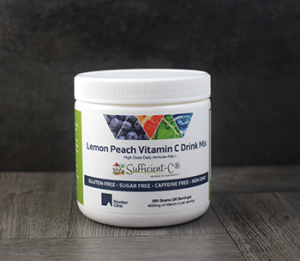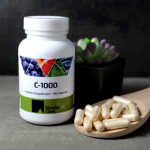Osteoporosis
By Ron Hunninghake, M.D.
Osteoporosis is an epidemic problem. One third of American women will have a fracture related to osteoporosis in their lifetime. The total cost exceeds $6 billion annually and that doesn’t count the human costs of a broken hip or the resultant disability from a fracture of the wrist or, even worse, the extreme pain of a compression fracture of the spine. It can happen to men as well as women.
”You aren’t just what you – eat, but you are what you digest, absorb, metabolize, and excrete.”
Reduced bone mass is usually associated with “getting older:’ but studies show that the negative calcium balance that sets the stage for osteoporosis is now beginning as early as the late 20s. A marathoning woman can start osteoporosis in her teens.
To prevent osteoporosis, the mainstays are calcium and estrogen therapy. Estrogen retards the loss of bone by inhibiting the osteoclast cells. We have to remember that bone is a dynamic structure that is constantly turning over its constituent minerals. Osteoclast cells break down the bone minerals and osteoblast cells build up bone minerals. Estrogen slows the breakdown. Unfortunately, estrogen will not prevent the continued progression of osteoporosis after roughly seven years of therapy.
Calcium helps if you have a definite depletion. As was found in one study, 25% of all osteoporotic women were low in calcium. If you give calcium it helps these women, but it doesn’t help the other 75%. Calcium does not appear to be the whole story.
The bone is a living tissue made up of living cells. There are no living cells that need just one nutrient. The idea that all you need for good, strong bones is calcium is not a sound way of thinking. Living cells need an array of nutrients. There are a number of minerals and micronutrients that are necessary for the bone cells to be in a dynamic, healthy, growing state.
The Department of Agriculture looks at how we Americans eat. Studies show that very few reach the RDA in all of the nutrients that are tested. For example, in calcium 68% of Americans are not meeting their recommended daily allowance. There are only lO nutrients on the RDA list, but there are over 50 essential nutrients. A diet composed of 50% non-whole foods means a 50% loss of essential nutrients that all cells, including bone cells, need to live and grow properly. One study found the average American eats 756 doughnuts each year. Folks, donuts don’t count as “hole foods.”
There are nutrients that you don’t normally think of in terms of osteoporosis; however, research supports the fact that they may be useful. Vitamin K, for example, is commonly associated with normal blood clotting. But it’s also necessary for the synthesis of osteocalcin which is necessary for the protein matrix upon which the calcium crystallizes. Deficiency is probably common because people don’t eat their three to five vegetables a day as they should. Antibiotics alter the bowel flora. The bowel flora makes vitamin K. Altered bowel flora can mean poor vitamin K synthesis. Vitamin K deficient rats had a higher excretion of calcium. Supplementation of vitamin K in osteoporosis patients has been shown to reduce urinary calcium loss by 18-50%. Vitamin K can also reduce bone pain.
Vitamin D is necessary for the gut to properly absorb intestinal calcium. The elderly commonly have reduced levels of vitamin D in their blood for several reasons. People stay indoors more than they need to. Sunshine catalysts the synthesis of vitamin D from cholesterol in our skin. About 80 to 85% of American women do not consume enough vitamin D. In addition, the aging gut doesn’t absorb the nutrients quite as well. “You aren’t just what you eat, but you are what you digest, absorb, metabolize, and excrete.”
In order to utilize vitamin D, it has to be converted to 125 dihydroxiD3. But for that to happen, adequate magnesium and boron are necessary. All nutrients work as a team. Adequate calcium and vitamin D could prove meaningless if essential co-factors are deficient.
Magnesium activates acolynphosphotates which is an enzyme found in the bone that is necessary for forming the calcium crystals. People deficient in magnesium do not utilize their vitamin D as well. In one study, 16 of 19 women with osteoporosis were low in their whole body and bone levels of magnesium. Two other studies showed that the daily intake of magnesium was less than two thirds of the RDA. Green leafy vegetables would be a good source of magnesium, although all whole foods contain essential nutrients. One may not be as spectacular as another whole food. Eating a variety of whole foods should insure a more complete array of essential nutrients.
Manganese is necessary for mineralization and synthesis of connective tissue. Connective tissue is what holds a body together. Bone is the quintessential connective tissue because it’s the structure on which everything else hangs. Rats fed a manganese deficient diet have smaller bones that are more prone to fractures. Manganese is present in whole grains. By eating refined grains, one loses at least half of the manganese.
Folic acid is also important. One of the amino acids that is in protein is methionine and that is converted to homocysteine which has an adverse effect on bones and tends to promote osteoporosis. Folic acid also helps to convert homocysteine back to methionine. The typical American diet only contains 50% of the RDA of folate. Tobacco smoking and alcohol, two known risk factors for osteoporosis, tend to promote folic acid deficiency.
Boron is something new. It is getting a little bit more attention in terms of osteoporosis. By supplementing post-menopausal women with 3 mg per day of boron, urinary calcium excretion is reduced by 44%. Serum concentrations of 17 beta-estradiol, which is the metabolically active form of estrogen will increase! In order to get this amount of increase in the 17 beta-estradiol, a woman would have to take about 95% more oral estrogen. But if you take the boron, you can get the body to make the endoginous beta-estradiol. Boron, thus, is capable of producing bone protective estrogenic effect without exposing the body to dangerous levels of exogenous estrogen.
Strontium is a nutrient in the non-radioactive state. There are high concentrations of it in bones and teeth and it gives the bone protein matrix strength. There are areas of the country with high concentrations of strontium in the water and lower incidence of dental cavities. If it helps build stronger teeth; then it can also help produce stronger bones. Multi-vitamins rarely contain strontium, and yet it is contained in whole foods.
Silicon is another one. We don’t normally think about silicon deficiencies because when you are eating a natural or native whole foods diet, the silicon is probably there. Once you start refining the foods, silicon intake starts to drop out. Collagen is the connective tissue that holds us together. We start getting wrinkles when we lose the cross-linking and the normal integrity of the connective tissue.
A vitamin B6 deficient diet fed to rats produces osteoporosis. Vitamin B6 is another co-factor in this enzyme cross-linking and it helps to metabolize homocysteine which is thought to promote osteoporosis. Vitamin B6 is commonly very low in the dietary surveys that have been done by the Department of Agriculture. Here it indicates that 80% of Americans are not consuming their RDA of vitamin B6.
Zinc is also essential for bone formation. It helps with the biochemistry of vitamin D. We have that team effect at work. Serum levels of zinc are low in elderly patients with osteoporosis. Diet surveys find that 68% of adults consume two-thirds of what they need in terms of the RDA. Since a lot of people do not absorb zinc very well. zinc picolinate seems to be transported and absorbed more efficiently.
Osteoporosis is a prime example of degenerative illness. It happens very slowly over 30 or 40 years and then one day a simple fall results in a broken hip. It took 30 or 40 years to incubate that fracture. A whole foods diet and a periodic micronutrient check-up would go a long way toward preventing this silent tragedy.





